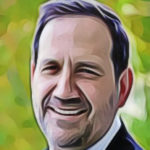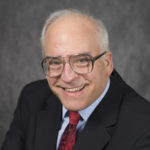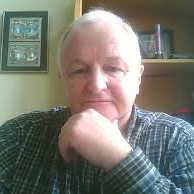December 11, 2020
Renewable energy is a hot topic around the world. What IS renewable energy? As you probably already know, it is energy sourced by a power that is not depleted when used. As nations strive to reduce the impact of CO2 and other pollutants on the Earth, there’s a global push toward zero emission energy sources. In other words, renewable energy.
Examples of renewable energy are Wind, Solar, Tidal, Geothermal, and Hydropower.
Read the rest of this entry »
 Leave a Comment » |
Leave a Comment » |  About Us, College level, electricity, Elementary level, energy, engineering, High School level, Middle School level, science fair, STEM | Tagged: climate change, green energy, hydropower, science |
About Us, College level, electricity, Elementary level, energy, engineering, High School level, Middle School level, science fair, STEM | Tagged: climate change, green energy, hydropower, science |  Permalink
Permalink
 Posted by Donna Giachetti
Posted by Donna Giachetti
August 14, 2020
Making bioplastics is a fantastic experiment to try at home or in the classroom. It’s a fun, hands-on way to learn about bioplastic alternatives that are environmentally safer for our planet than traditional plastics. Creating a bioplastic keepsake is likely to inspire further investigations and, in some cases, even future careers for young scientists! Plus, they’re gorgeous!
Read the rest of this entry »
 5 Comments |
5 Comments |  Chemistry, College level, Elementary level, experiments, High School level, Middle School level, science fair | Tagged: bioplastics, DIY, Educational Innovations, fun experiments, science crafts |
Chemistry, College level, Elementary level, experiments, High School level, Middle School level, science fair | Tagged: bioplastics, DIY, Educational Innovations, fun experiments, science crafts |  Permalink
Permalink
 Posted by Donna Giachetti
Posted by Donna Giachetti
October 25, 2019
 By Robert O. Grover
By Robert O. Grover
Not too long ago, we traveled to North Idaho and the beautiful town of Coeur d’Alene where the annual Idaho Science Teachers Association (ISTA) was holding the great Idaho STEM Together! Over 300 educators and STEM enthusiasts showed up to partake in activities, professional development sessions, and field trips. Of course Team databot™ was there!
As advertised, we held a competition to see who could deliver the highest CO2 level possible. The prize for the highest level? A complete databot™ kit! Read the rest of this entry »
 Leave a Comment » |
Leave a Comment » |  Biology, College level, Elementary level, experiments, High School level, Middle School level, science fair, STEM | Tagged: databot, experiments, hands-on science, homeschool, parent friendly, phenomenon based learning, science, science fair project, STEM |
Biology, College level, Elementary level, experiments, High School level, Middle School level, science fair, STEM | Tagged: databot, experiments, hands-on science, homeschool, parent friendly, phenomenon based learning, science, science fair project, STEM |  Permalink
Permalink
 Posted by Donna Giachetti
Posted by Donna Giachetti
March 23, 2018
 by Priscilla Robinson
by Priscilla Robinson
If you teach STEM, you’ll want to learn about the OneCar system.
The performance components in the Next Generation Science Standards (NGSS) have spawned many wonderful chances to explore STEM in the classroom. The STEM curriculum is based on the idea that an interdisciplinary, applied approach is the best way to teach students these four specific disciplines. When your students are searching for solutions to real-world problems, they are more engaged, and their learning is more authentic.
Read the rest of this entry »
 2 Comments |
2 Comments |  College level, Elementary level, energy, experiments, High School level, Middle School level, Physics, science fair, STEM | Tagged: air pressure, awesome science experiment, Educational Innovations, energy, fun experiments, hands-on science, homeschool, Newton's First Law, Newton's Second Law, Newton's Third Law, parent friendly, PBL, phenomenon based learning, phenomenon-based science, Physics, rockets, science, science fair project, STEM, variables |
College level, Elementary level, energy, experiments, High School level, Middle School level, Physics, science fair, STEM | Tagged: air pressure, awesome science experiment, Educational Innovations, energy, fun experiments, hands-on science, homeschool, Newton's First Law, Newton's Second Law, Newton's Third Law, parent friendly, PBL, phenomenon based learning, phenomenon-based science, Physics, rockets, science, science fair project, STEM, variables |  Permalink
Permalink
 Posted by Donna Giachetti
Posted by Donna Giachetti
March 2, 2018
 by Alex Scheeline
by Alex Scheeline
The Smithsonian Institution’s National Museum of American History, on the national mall in Washington, D.C., has an especially fascinating exhibit on Thomas Edison. The exhibit highlights the development of electricity and lighting, and, more generally, invention. In late 2017, I visited an area that featured a set of lamps—including a low-pressure sodium vapor lamp, a mercury lamp, an incandescent lamp, and a compact fluorescent lamp.
Read the rest of this entry »
 1 Comment |
1 Comment |  College level, experiments, High School level, Middle School level, Physics, science fair, STEM | Tagged: color, diffraction, DIY, experiments, hands-on science, light, phenomenon based learning, phenomenon-based science, physics demonstration apparatus, science, science fair project, spectra, spectrascope, STEM, ultraviolet |
College level, experiments, High School level, Middle School level, Physics, science fair, STEM | Tagged: color, diffraction, DIY, experiments, hands-on science, light, phenomenon based learning, phenomenon-based science, physics demonstration apparatus, science, science fair project, spectra, spectrascope, STEM, ultraviolet |  Permalink
Permalink
 Posted by Donna Giachetti
Posted by Donna Giachetti




 Posted by Donna Giachetti
Posted by Donna Giachetti 
 By Robert O. Grover
By Robert O. Grover by Priscilla Robinson
by Priscilla Robinson by Alex Scheeline
by Alex Scheeline